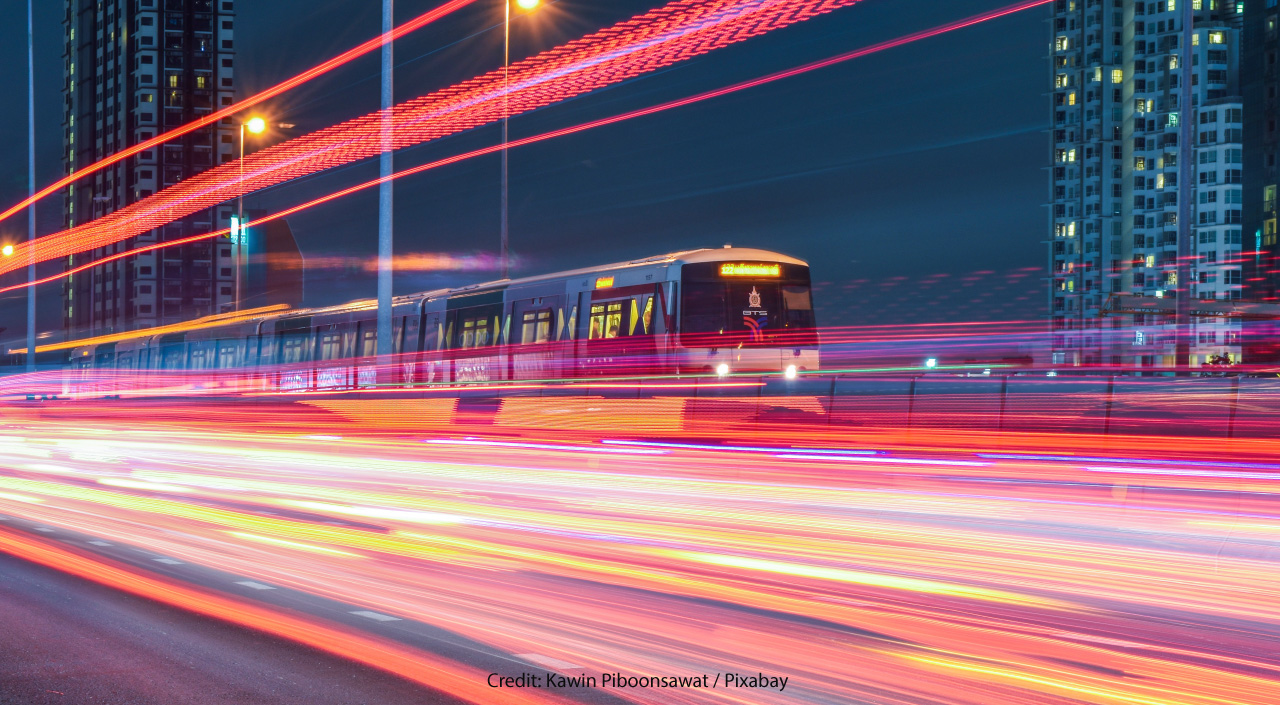On the Right Track
Since it opened in 1999, the Bangkok Mass Transit System, better known as the “BTS” or “Skytrain”, has become an integral part of the lives of many of us who live, work and travel in this vast sprawling capital. Of course, no system is perfect as we’ve experienced many delays these past months, but the BTS remains an integral part of the city’s transportation network. There are currently 35 stations with more planned and average daily ridership (umber of passengers using the trains) of almost 700,000.
I first came to live and work in Bangkok in 2004 and the network has developed considerably over the years with extensions to Samrong and integration with the MRT underground system and also the Airport Rail Link at Phaya Thai station.
The technology inside the carriages has transformed the journeying experience. There are TV screens with ads and information about the next station, digitalized route planners with green and red lights in addition to the driver’s announcements and the taped messages. There is more visible security, too, with guards checking bags at every station as you go through the ticket barriers before proceeding to the platform.
I can honestly say I have used every stop on the two lines – Sukhumvit and Silom. Coming into the city there is a fascinating mix of stations, those like Bang Chak, Udom Suk and Phra Khanong play host to mostly flip flop clad locals bearing bags of fruit and vegetables. Then we come to the more affluent areas of Ekkamai, Thong Lo and Phrom Phong. Alighting here are the business commuters, iPads in hand, whether sitting or standing, and it is frequently the latter. The retail units at those stations also reflect the more expensive tastes of those who live around the areas, with glass fronted nail salons, contact lens shops and trendy drinks outlets.
Asok is a retail heaven with bewildered Chinese and Japanese tourists poring over maps or gazing up at the route finders. It also connects to the MRT so expect this to be crowded and watch your belongings in the rush.
Mention Nana and I give a slight cough. This is one of the major adult pleasure zones with clubs and bars. Then we arrive at the business and retail stations Phloen Chit and Chit Lom with more well-heeled passengers and tourists jabber in multiple languages.
Phaya Thai is the key Airport Rail Link station and sees visitors trundling “BKK” stickered suitcases on and off the packed carriages here. Mo Chit is a terminal destination and is relatively quiet during the week, but at weekends be careful, as this assumes a different role with thousands looking to visit the nearby and famous Chatuchak Market.
Mysteries abound. Does anyone get on and off at Ratchatewi or Rajadamri? They seem almost as afterthought destinations surrounded by hotels and a golf course.
Siam is arguably the heart of the city and this station is incredibly busy all the time. It connects to the Silom line and is always a confused stew of humanity exiting trains and literally running to the stairs and escalators. Students, tourists, locals, and business people trying desperately to avoid being crushed, bumped into, or pushed out of the way.
Several questions need to be asked such as why there are only four carriages for every train? Why do some platforms have protective barriers, but not all of them? Why do some stations have split railings up and down the stairs, but not all? Why can’t we have return tickets which would speed passenger processing?
Guaranteeing a seat on the BTS? It is almost equivalent to the chances of winning the national lottery here. Queuing at stations? Okay at less populated venues, but forget any notions of etiquette at Asok and Siam during rush hour, as it is every man and woman for themselves.
The nature of the passengers has changed significantly, too. Most are heads down to their iPhones. Few seem to talk. The BTS system is far from perfect, but what transport network is? Nevertheless, it is a constantly fascinating, ever-changing demographical mirror of society and those who use it. Oops, time to get off at the next station!







